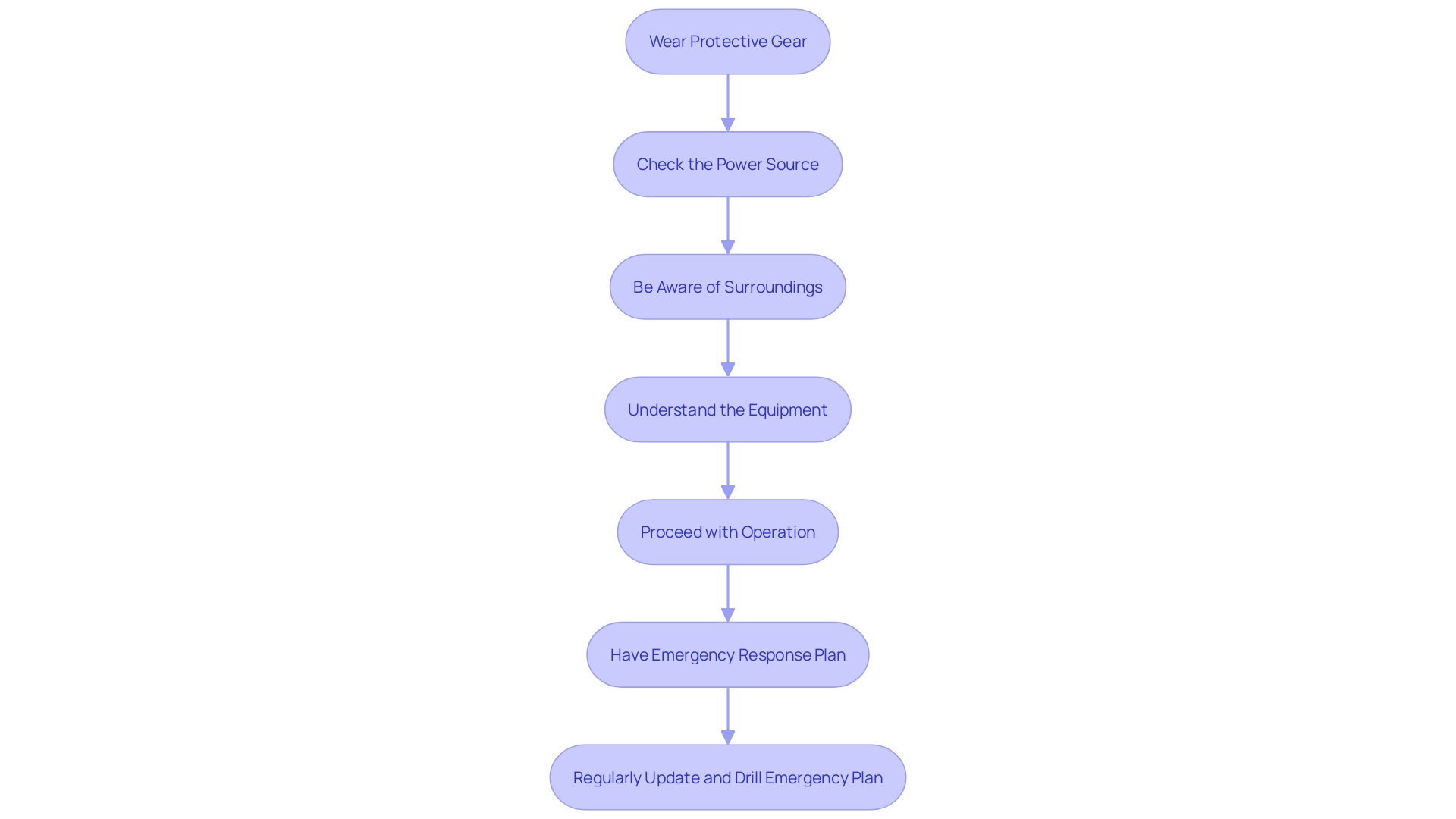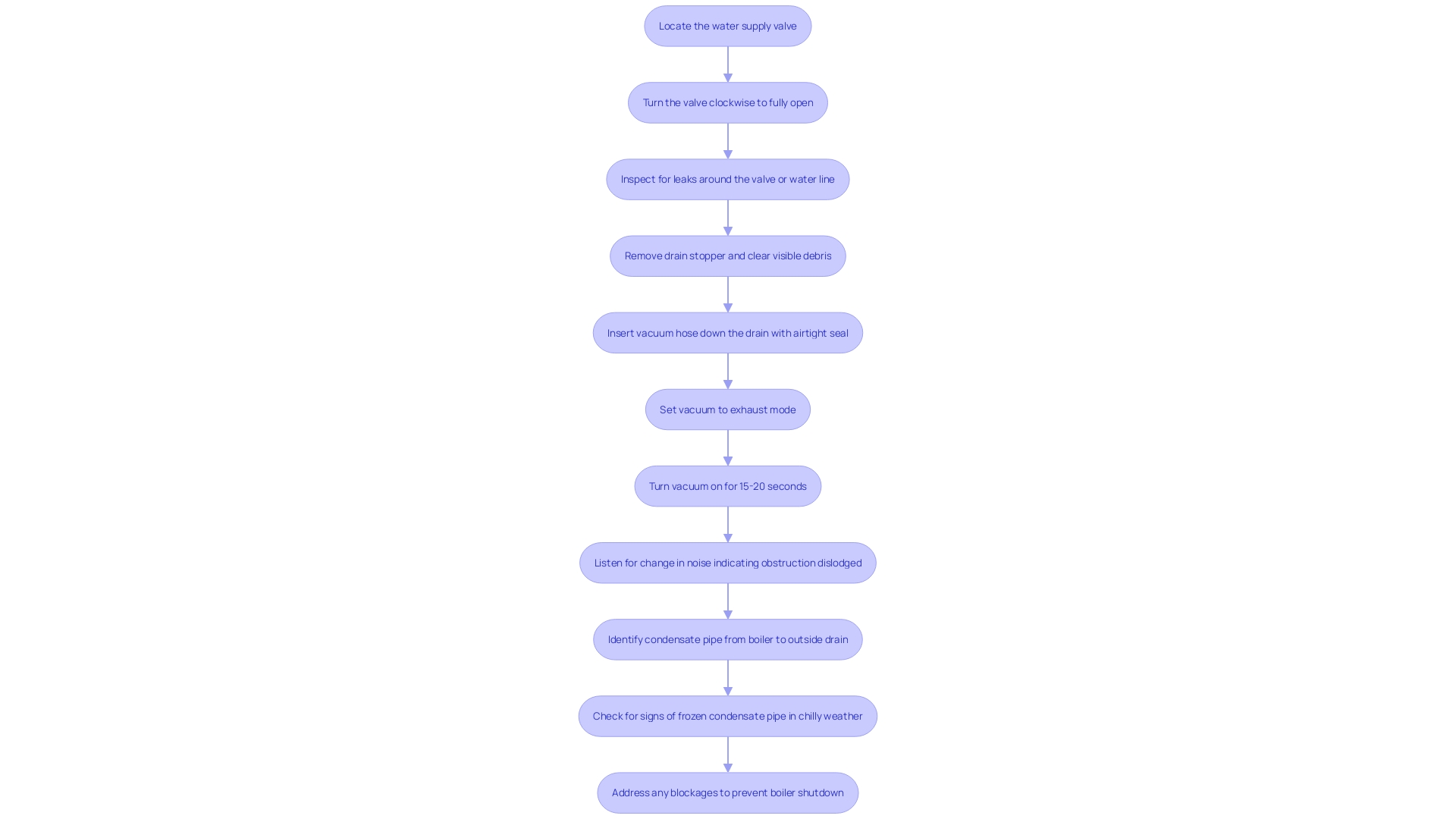Introduction
Clogged drains can be a persistent and frustrating problem in any household. However, understanding the different types of drain snakes, their specific uses, and how to operate them safely can provide effective solutions to these common plumbing issues. This comprehensive guide will explore the various types of drain snakes, including handheld, electric, flexible, and heavy-duty options, and their appropriate applications.
Additionally, it will cover essential safety precautions to prevent accidents and damage, a step-by-step guide for using a drain snake, common mistakes to avoid, and when it's best to seek professional help. Finally, preventive measures to keep drains clear and rental options for heavy-duty snakes will be discussed to ensure that your plumbing system remains efficient and clog-free.
Types of Drain Snakes and Their Uses
Drain snakes come in various types, each designed for specific situations, providing effective solutions to different drainage issues. The most common types include:
-
Handheld Drain Snakes: Ideal for minor clogs in sinks and tubs, they are easy to use and highly effective for smaller blockages. These tools are perfect for quick fixes and minor household plumbing problems.
-
Electric Drain Snakes: Best suited for more severe blockages, these machines handle tougher jobs in larger pipes, such as main sewer lines. They provide greater torque and can reach deeper into plumbing systems, making them essential for significant blockages.
-
Flexible Drain Snakes: Designed to navigate bends and turns in pipes, these are excellent for complex drainage systems. Their adaptability enables them to navigate through complex plumbing configurations, ensuring complete blockage removal.
-
Heavy-Duty Drain Snakes: Typically used by professionals, these robust tools are strong enough for the toughest clogs. They can be rented for significant blockages that require extensive work, providing a reliable solution for severe plumbing issues.
Safety Precautions When Using a Drain Snake
Utilizing a plumbing auger can be risky if appropriate precautions are not observed. Here are essential safety measures to consider:
- Wear Protective Gear: Ensure you are wearing gloves, safety goggles, and a mask to protect against debris and harmful substances. Personal Protective Equipment (PPE) serves as a crucial last line of defense against potential injuries.
- Check the Power Source: For electric augers, inspect the power source and cords regularly to ensure they are in good condition, preventing electrical hazards. It's vital to follow guidelines for operating equipment safely in wet areas to avoid electrical shocks.
- Be Aware of Surroundings: Keep the work area clear of pets and children to prevent accidents. Falls are the second leading cause of accidental death in communities, and keeping the environment free of obstructions can significantly reduce this risk.
- Understand the Equipment: Familiarize yourself with the specific plumbing tool being used, including its operation and limitations. Reading the manual and understanding the equipment thoroughly can prevent misuse and potential injuries.

Step-by-Step Guide to Using a Drain Snake
To use a drain snake effectively, follow this systematic approach:
- Prepare the Area: Ensure the space around the outlet is clear to give you enough room to work comfortably.
- Insert the Serpent: Gradually push the serpent into the pipe until you feel resistance, signaling the existence of a blockage.
- Rotate the Handle: Turn the handle clockwise while gently pushing forward. This motion helps break up the blockage effectively.
- Retract: Once you sense the obstruction beginning to loosen, gently retract the tool to eliminate the blockage.
- Flush the Outlet: After clearing the blockage, run hot water down the outlet to flush away any remaining particles.
'Customers frequently praise the ease of use and effectiveness of drain tools, highlighting their ability to tackle tough clogs in kitchen and bathroom sinks.'. For instance, one user mentioned, "This snake has done an awesome job unclogging my bathtub. I wish I had been aware of this resource years ago Another noted, "This is a good tool to unclog kitchen and bathroom sinks."
Utilizing a plumbing auger as outlined can save time and avoid the need for strong chemicals that could potentially harm your pipes. Consistent usage can maintain your plumbing clear and operating efficiently.

Common Mistakes to Avoid When Snaking a Drain
When using a drain snake, several common errors can lead to ineffective results or damage:
- Using Excessive Force: Applying too much pressure can damage pipes. Instead, allow the serpent to do the work. Many users report that allowing the creature to navigate the bends naturally provides better results.
- Not Examining the Obstruction: Failing to comprehend the kind of blockage can result in incorrect utilization of the auger. For instance, attempting to clear a grease clog with a standard tool might not be effective. Understanding the nature of the blockage is crucial.
- Neglecting to Clean the Equipment: After use, failing to clean the tool can lead to corrosion and future performance issues. Regular maintenance, similar to cleaning cooling water circuits and heat exchangers, ensures longevity and reliability.
- Ignoring Safety Measures: Skipping safety precautions can result in injury or accidents. Just as ladder safety is crucial to prevent falls, correct management of the plumbing tool, including wearing gloves and protective eyewear, is important for preventing injuries. Ensuring these measures can prevent potential hazards and ensure a safer, more effective unclogging process.
When to Use a Drain Snake vs. Professional Help
Determining whether to utilize a plumbing tool or contact an expert can be essential in conserving time and funds. Here are some guidelines to help you make an informed choice:
- Use a Drain Snake When:
- The clog is minor and within reach. A plumbing snake can effectively handle common clogs, such as hair or small debris.
- You have the necessary tools and experience. Having the right equipment and knowing how to use it can make a significant difference.
-
You can access the outlet easily. If the blockage is in a reachable location, a drain auger is a useful remedy.
-
Call a Professional When:
- The clog is persistent and cannot be cleared with a snake. Stubborn clogs may indicate a more severe blockage that requires professional intervention.
- You suspect a more serious issue like a broken pipe. Professionals can accurately diagnose and repair complex problems, ensuring the integrity of your plumbing system.
- You lack the tools or expertise to handle the situation safely. Professional plumbers have specialized equipment and extensive experience, making them the best choice for complicated or potentially hazardous situations.
As one specialist suggests, "So, if you're experiencing plumbing problems it is always best to have a plumbing professional examine the system to ensure you do not have a larger issue occurring." Trusting professionals ensures that underlying problems are identified and resolved efficiently, preventing future complications. Additionally, maintaining the integrity of your plumbing can enhance the overall value and safety of your property.

Preventive Measures to Keep Drains Clear
Avoiding blockages is more effective than handling them after they happen. Consider these preventive measures:
- Regular Maintenance: Regularly clean drains to remove buildup before it becomes a clog. The best way to handle blocked pipes is to stop them from occurring. Fats, oils, and grease (FOG) solidify in pipes and create blockages, leading to major damage and costly repairs.
- Use Drain Screens: Install screens to catch hair and debris before they enter the pipe. This simple step can significantly reduce the amount of debris that makes its way into your plumbing system.
- Be Mindful of What Goes Down the Drain: Avoid disposing of grease, coffee grounds, and large food particles in sinks. Remember that FOG solidifies and can create blockages, so it's important to properly dispose of these substances.
- Routine Inspections: Periodically inspect plumbing for signs of wear or potential clogs. Regular inspections can help identify issues early before they become major problems.
By adhering to these suggestions, you can prevent the hassle and cost of managing blocked pipes.
Rental Options for Heavy-Duty Snakes
When considering a heavy-duty drain snake rental, explore various options to find the best fit for your needs:
-
Local Hardware Stores: Many local hardware or home improvement stores offer rental services for heavy-duty snakes. These stores are often convenient and may provide immediate availability.
-
Specialty Tool Rental Companies: These companies often provide a wider range of equipment and expertise. For example, with more than 950 Sunbelt Rentals sites nationwide, you can access a wide range of equipment, some of which provide delivery and pickup services for greater convenience. Drew Mansur, co-founder and director of TileCloud, suggests local rental companies for more specialized equipment and expert guidance.
-
Online Rental Services: Certain websites allow you to reserve and pick up equipment, often at competitive rates. This can be a time-saving option, especially when comparing prices and availability across different locations. It's important to note that rental costs can vary significantly based on the type of equipment, rental duration, and local market rates.
-
Shareable Equipment or Equipment Libraries: If you're not acquainted with shareable equipment or equipment libraries, these are community groups or sections of public libraries where you can borrow implements instead of purchasing or renting them. They are excellent for fundamental implements and large machinery and are frequently free or quite economical.
Always check the rental terms, including the duration, pricing, and any required deposits. Mansur estimates that the rental cost for a basic power tool will be around $30 to $50 a day, with prices increasing for larger pieces of equipment. While renting might seem costly, it is typically cheaper than purchasing the equipment or hiring professionals.
Conclusion
Clogged drains can significantly disrupt daily life, but the right tools and knowledge can effectively address these issues. Understanding the various types of drain snakes—handheld, electric, flexible, and heavy-duty—enables homeowners to choose the appropriate solution for their specific plumbing needs. Each type serves a distinct purpose, ensuring that whether dealing with a minor sink blockage or a major sewer line issue, there is a suitable tool available.
Safety remains a paramount concern when using drain snakes. Adhering to essential precautions, such as wearing protective gear and understanding the equipment, helps prevent accidents. Additionally, a systematic approach to using the snake can enhance effectiveness and minimize the risk of damaging plumbing systems.
Awareness of common mistakes, such as applying excessive force or neglecting equipment maintenance, is crucial for successful and safe operation.
Recognizing when to use a drain snake versus when to call a professional can save time and resources. For minor clogs and accessible drains, a drain snake can be a practical solution, while persistent or complex issues may require professional intervention. Preventive measures, including regular maintenance and mindful disposal practices, can significantly reduce the likelihood of future clogs, promoting a healthier plumbing system.
Lastly, for those facing significant blockages, rental options for heavy-duty snakes provide a cost-effective solution. Local hardware stores, specialty rental companies, and online services offer various choices to meet different needs. By being proactive and informed, homeowners can maintain clear drains and ensure the longevity of their plumbing systems.




